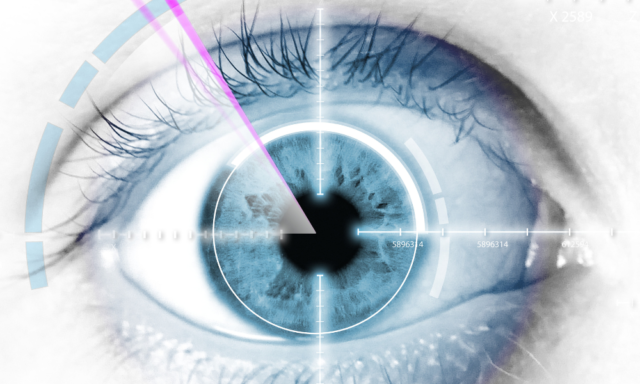The U.S. is currently facing a critical shortage of physicians, a challenge exacerbated by the pandemic. And the shortage is expected to worsen in the coming years, namely due to population growth and the aging of the boomer generation. A particularly concerning gap is the declining availability of ophthalmologists at a time when demand for vision services is steadily increasing.
A little history
Over the past 30 years, the scope of optometry in the U.S. has evolved fairly dramatically, from vision correction to comprehensive eye care, including management and treatment of ocular diseases like glaucoma and macular degeneration. Opportunities for expanded scope increased significantly in 1986 when the federal government classified optometrists as medical providers eligible for Medicare reimbursement.
Since then, legislative changes have allowed optometrists to prescribe medications, perform minor surgical procedures in some states, and play a part in managing systemic conditions. The profession has also embraced advanced technology, pediatric care, and vision therapy, while tele-optometry and interdisciplinary care have expanded access to services. Optometrists are increasingly recognized as primary healthcare providers, though scope-of-practice laws continue to vary by state.
Where are we now?
Expansion of optometry’s scope of practice in the U.S. continues to gain momentum. There are currently 12 “laser states,” i.e., states in which scope includes the use of lasers. And more states pursued scope expansion for laser rights in 2024 than in any previous year.
Education and residency programs have grown to reflect the legislative changes. Today’s optometry students are being taught to perform minor surgical procedures like lesion removal and subcutaneous injection and laser procedures such as selective laser trabeculoplasty, YAG capsulotomy, and laser peripheral iridotomy.
Advocates point out that expanding optometric practice reduces healthcare costs and improves access to essential care, especially in rural and underserved areas, where optometrists often serve as primary eye care providers.
This shift is not without opposition, however. Medical orgs have pushed back against these expansions, referring to it as scope creep, citing patient safety and the level of surgical training optometrists receive compared to ophthalmologists. Expanded scope has led to increased overlap between ophthalmologists and optometrists, which seems to be creating an unfortunate tension between the fields. One only has to read a little bit from either side to get a sense of the different tones (e.g., What’s the Difference Between Optometrists and Ophthalmologists? from the American Medical Association compared to Optometric Scope: Breaking Down Barriers from Review of Optometry).
To be fair, it’s not just MDs who have opposing views. Some ODs are not interested in performing scalpel or laser surgery, for example. But expanding access to high-quality patient care is a positive. And expanded scope for optometry has so far proven to be just that:
“[Level of training] is the only argument that ophthalmology has been able to claim, and it’s never come to fruition, but that’s what they cling to in every scope battle that comes along,” says Angelique Sawyer, OD, legislative co-chair of the New Hampshire Optometric Association, which is currently pushing to authorize lasers and advanced procedures. “We’re not asking for things that are outside of our training and education, and we’ve proven time and time again that when the legislature grants us authority and increased scope, we do it responsibly and to the benefit of our patients,” she says. (Source: Optometric Scope: Breaking Down Barriers, Review of Optometry)
Looking ahead
Despite some setbacks, such as a vetoed bill in California (and a second attempt still in limbo), several states are pressing forward, which signals the increasing role of optometry in the broader healthcare landscape.
[Dr. Nate Lighthizer, OD] reiterates that “optometrists have a great track record of safely performing [new] procedures,” but adds that there will always be political opposition. “I think the reason why some states struggle is because you have to have the right people in place to pass a law,” he notes. For example, scope advocates in states with legislators who are also medical doctors — such as West Virginia and California — may have a more difficult time hammering home the safety and necessity of OD-performed procedures. (Source: Optometric Scope: Breaking Down Barriers, Review of Optometry)
If the data is any indication, optometry scope expansion will reach more states: A recent study examining the effect of optometrists’ prescription authority found that granting optometrists the ability to prescribe therapeutic pharmaceutical agents improved public eye health. The study revealed that vision impairment decreased by 12% on average over a 15-year period following the expansion of optometry’s scope.
“The effect was not instant but emerged six years after the policy change. Moreover, the policy brought a more significant decline in vision impairment among the nonwhite population, who might have more limited access to medical care than white people.” (Source: Seeing Is Believing: The Effects of Expanding Optometrists’ Scope of Practice)
Findings from the study imply that allowing optometrists to practice to the full extent of their training might encourage them to provide higher-value services, which will further improve public eye health. The thinking is: Empowering optometrists improves care access by reducing reliance on ophthalmologist referrals.





